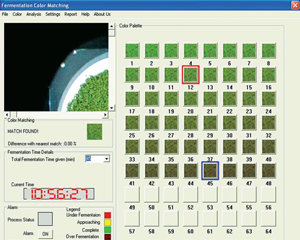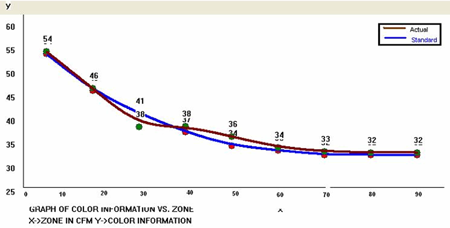Compression vector or a fingerprint is extracted by reducing the number of descriptors. Normalisation is the final leg of pre-processing where techniques are applied to operate on the sensor signal to compensate for sample-to-sample variations due to change in analyte concentration and drift in the sensors. Alternatively, the entire database of a single sensor can be operated upon and scaling of sensors effected. The former technique is known as local method and the latter as global method.
The responses generated by an array of olfaction sensors are processed using a variety of techniques. The pattern recognition engine may be developed using both parametric and non parametric methods. Parametric methods are commonly referred to as statistical approaches and are based on the assumption that the sensor data set may be represented as a probability distribution function. The non-parametric methods do not assume any probability distribution function and deal with biologically inspired techniques, viz, artificial neural networks and expert systems.
A MOS-based electronic nose has been developed for tea aroma characterisation at C-DAC, Kolkata. The e-nose setup is shown in Fig.3.
The following e-noses are available in the market: FOX 2000/3000/4000, PEN 3, GDA 2, i-PEN, Gemini, Cybernose, ZNose 4200/4300/7100, Astree, Smart Nose 2000 and LibraNose 2.1.
[/stextbox]
[stextbox id=”info” caption=”INNOVATIONS”]
2. Electronic vision for tea
Vision is the most advanced human sense and images play an important role in human perception. Digital image processing is one of the emerging frontiers of advanced research. It deals with the process of digital camera-based image capturing, conditioning and measuring the captured images by advanced soft-computing algorithm so that important information and features may be extracted from the acquired images.
Colour of tea leaves (both finished as well as in-process) play an important role in optimisation of the length of the processes, estimation of quality and gradation of finished tea. The advances of digital image processing techniques may be gainfully employed for objective assessment of tea-quality.

A number of image processing-based solutions (block diagram shown in Fig. 5) have been developed: End-point detection of fermentation by monitoring tea-leaf colour, mimicking visual inspection of tea-taster by electronic means and quality estimation (tea gradation) of manufactured tea at drier mouth.
End-point detection of fermentation by monitoring tea-leaf colour. Determination of optimal point in fermentation process is crucial for quality in manufactured black tea. Fermentation is an oxidation process wherein various enzymatic reactions and chemical changes occur progressively leading to change in the colour of cut tea leaves from green to coppery-brown. Over- or under-fermentation may lead to significant quality degradation.
Traditionally, the fermentation end-point is determined by two physical parameters—observing the odour (apple-type flavour) and simultaneously monitoring the leaf colour (coppery-brown). There is also a wet colorimetric test to determine the fermentation end-point.
An image processing-based e-vision system has been developed to detect the end-point of fermentation using a suitable colour-matching algorithm backed up by soft computing technique. During software training, a colour-palette/image database is created with colour images of the leaf at various stages of fermentation process. This is called a standard image database.
During the actual fermentation process, any leaf image at any stage of the fermentation process can be compared against those of the standard database to determine an estimation of the remaining time for fermentation. Being physical, this colour comparison is a convenient tool to determine the end-point of fermentation instantly with a high degree of accuracy and repeatability with respect to finished tea quality.


The software framework enables tea planters to train the system with fermentation colour data of their own garden. Additionally, user-friendly software (Fig. 6(a)) has been designed to display dynamic colour profile with respect to time (Fig. 6(b)) for comparison against any previously stored profile. The framework enables data logging, audio-visual alarm annunciation, etc.
Finished tea classification by e-vision. Traditionally, the quality of processed tea is measured by measuring its grain size, appearance, liquor colour, infusion and flavour in a subjective manner (on a 1-10 scale). An e-vision system captures the images of various tea samples for analysis using colour matching/soft computing technique to provide a colour index value (like tea tasters’ score) more precisely and reliably. It also finds a suitable match from the previously-created image database.
Monitoring is based on the grain-size, dry leaf texture, dry leaf appearance, liquor colour (without milk), liquor colour (with milk), etc. Colour-image is analysed using hue, saturation and intensity (HSI) model because human perception is closely matched with this classification system. A suitable colour-matching algorithm with soft computing technique is utilised to determine the nearest match from this image database. Ultimately, this colour-indexing may also be correlated with the tea tastes’ grading.





